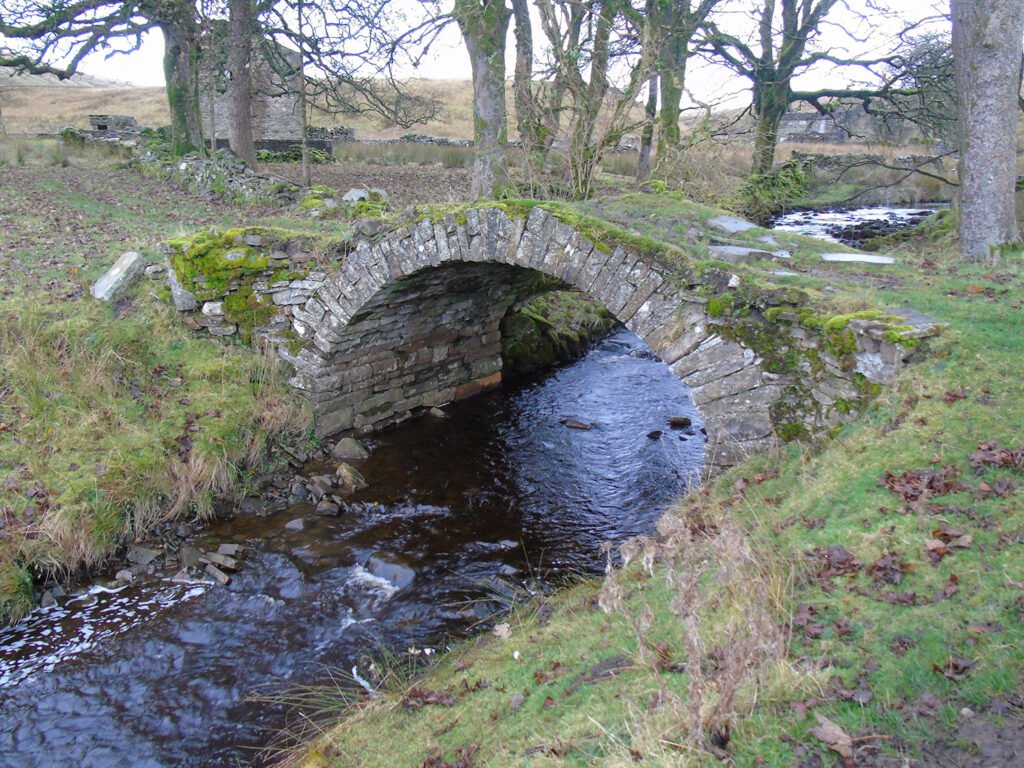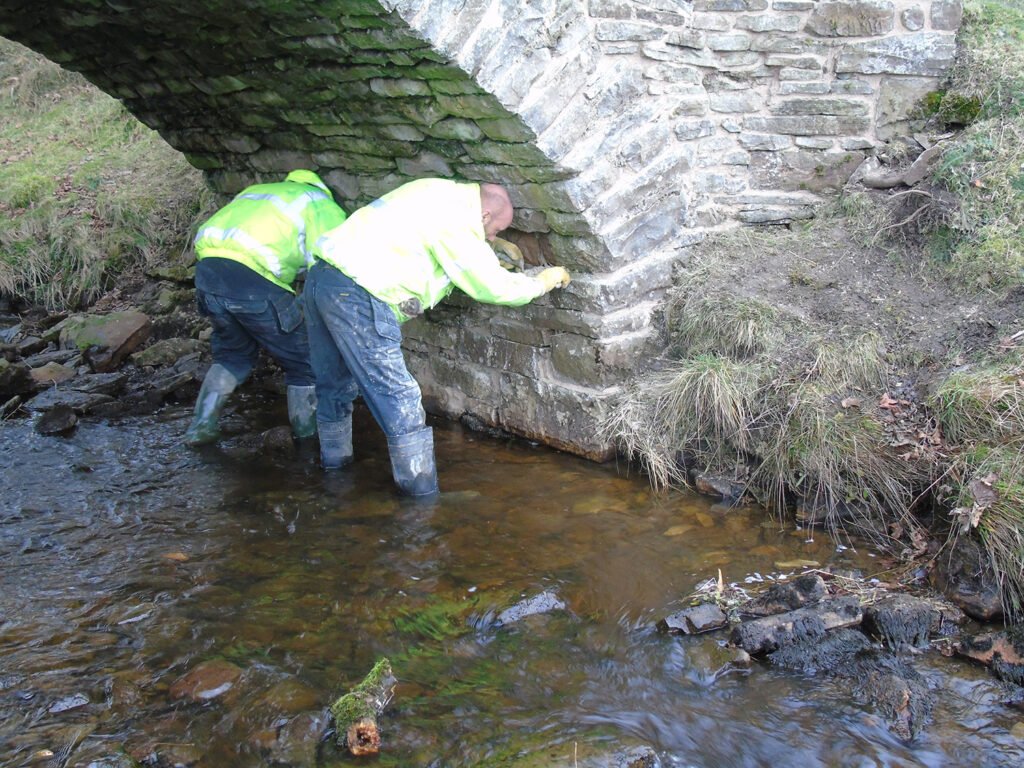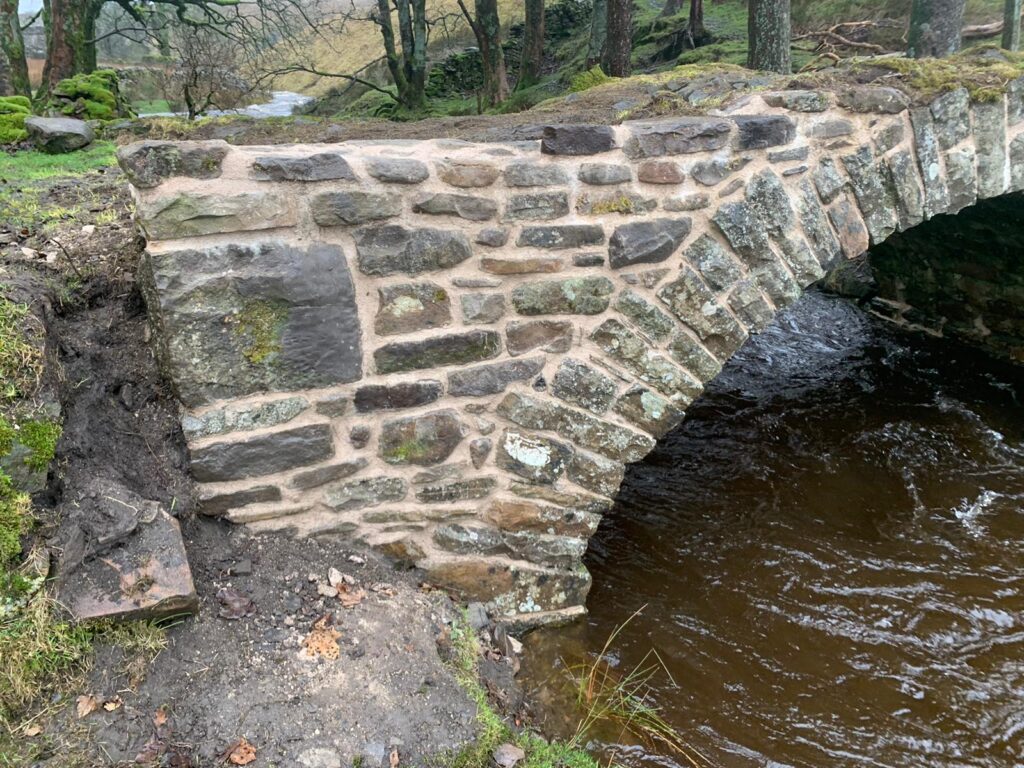The Bridge and Settlement
Grisedale Bridge is a Grade II listed structure situated over Grisedale Beck within the Parish of Garsdale. Although it sits in south east Cumbria, it is located within the Yorkshire Dales National Park. The bridge provides access to a deserted small settlement which comprises of two further early 17th Century listed buildings. These are the East Scale and West Scale farmhouses, which have been on the Building at Risk Register for a long time. The settlement of Grisedale, sometimes Grisdale, is very remote but lies along a popular walking route. The bridge, thought to be late 17th century is of heritage significance as it was part of a historic route, possibly a former trade route.

The bridge itself is a packhorse bridge, most likely built with very low parapets so as not to impede the passage of laden packhorses over it. The area has a very interesting history and is associated with the early development of Quakerism in the Dales. In fact is is recorded as a Quaker burial place as early as 1679. Building Conservation Officers visited the structure in June 2019 marked the bridge as “At Risk”, due to some collapse, movement and other deterioration of stone work. The Yorkshire Dales National Park Authority put funds forward to strength and restore the bridge. Proposed works on the structure included the consolidation to parts of the spandrels and repairs to the arch.
First Steps
Because of the rough terrain, a 4×4 vehicle was needed to access the site. The bridge is some distance from the road network and forms part of a public right of way. The track across the bridge had some large loose stones in the eastern half which were to be removed and re-used for the repairs of the walling. The southwest spandrel had deteriorated notably over the last three decades. It looked no more than half the size it was in its earliest existing photo from 25 years earlier. Moreover, the remaining stonework was leaning outwards so significantly that it was considered structurally unstable. South elevation of the arch was in fair condition, but required vegetation removal and some pointing.
The northwest spandrel is a small revetment wall built to protect the bridge from the force of water. But unusually, it has a tree growing on top of it, which was thought to be causing damage to the bridge. The north elevation bridge arch had deeply eroded mortar joints which required re-pointing and packing with stone. The northeast spandrel had loose collapsed stone work which needed to be cleared to see the full extent of the works needed. The same applied to the northeast revetment, where we needed to clear a large amount of stone. The underside had deeply eroded mortar joints and larger voids at the footings on both sides which required pointing and pinning.

Lime Pointing
Before we did anything structural, we needed to fell the tree on the northwest revetment. We used temporary barriers to maintain an exclusion zone twice the height of the tree throughout the works. Following this we moved to dismantling the spandrel, taking great care not to dislodge anything else on the fragile bridge. We photographed and documented the existing placement of each stone to ensure they were placed back into original position. An exclusion zone was implemented to ensure nobody was below or in the immediate area of masonry activity. We used hand tools to loosen the masonry to aid removal prior to attempting to lift.
Each piece of masonry was photographed and labelled so that the reconstruction would be more managable. We were then able to reconstruct the spandrel keeping the exclusion zone in place. We positioned masonry units on wet lime mortar bed and ensured the units were relocated to their original position using the photographs we had documented. Assembled masonry units were then lime pointed by hand using pointing trowels to complete the reassembly procedure. The areas of existing mortar which needed to be removed were marked out, and existing pointing was removed. This provided a level of mechanical anchoring of the new mortar into the joint. Great care was also taken to ensure that any original lime mortars were left in place, in accordance with the principal of minimum intervention.

Winter
With winter approaching, the timescale of the works was imperative. Typically no mortar should be laid during heavy rain, or in temperatures less than 5°C. So, special precautions were taken by covering the pointing at the end of each day. We used hessian sheets and visqueen, keeping the pointing wet for at least five days after completion. Once the mortar had adequately dried out it was then brushed back with a churn brush to expose the aggregate and edges of the adjacent masonry. This would seal the joint between the mortar and the stone. Our team worked closely with the YDNPA’s conservation officers to ensure all works conducted on the bridge were in keeping with the bridge and surrounding areas history and heritage.
Don’t forget to keep yourself updated with our projects on our YouTube channel